50 Words or Less
The Motocaddy M7 GPS Electric Caddy adds GPS with smartphone notifications to a proven, powerful platform. Large and bright, the LCD touchscreen is easy to navigate.
Introduction
How do you make the best better? Well, for Motocaddy, you add a touchscreen golf-centric GPS to your top-end M7 Remote Electric Caddy and create the all new Motocaddy M7 GPS Electric Caddy.
With that, I’m going to ask you to read Matt Saternus’s review of the M7 Remote version which you can find HERE. I’ll add a couple comments in this review regarding a few areas of the Electric Caddy that Matt thoroughly covered, but my main focus will be with the GPS component.
Size & Setup
Assembling the Motocaddy M7 GPS Electric Caddy was as simple as Matt described, and the GPS module came on as soon as the lithium battery was connected. The initial screen offered two options: “Play Golf” and “Settings.” In Settings, I adjusted the GMT based clock (Motocaddy is clearly an international company), connected to my WiFi to make sure I had the latest firmware, and paired the trolley with my phone to enable smartphone notifications (I had previously downloaded the Motocaddy app). The touchscreen was easy to navigate. Having a large on-screen keyboard appear when needed was a godsend.
The M7 GPS comes with a 12 month subscription to the Motocaddy Performance Plan. I followed the on-screen prompts and added the Plan in less than a minute. It wasn’t until I took some time to peruse the included instruction manual that I truly understood what was included in the Plan (hole mapping, detailed green view, advanced statistic tracking, and performance analysis), and how integral those features are to the overall experience.
When I engaged the Play Golf mode the first time, the GPS searched for about 2 minutes and then provided an accurate list of the nearest golf courses. Subsequent on/offs found the course more quickly. And just so you don’t look for an on/off button like I did, that function is solely dependent on connecting or disconnecting the battery.
With the course selected, the 3.5” M7 GPS LCD screen displayed a bright, crystal clear depiction of the first hole, front/middle/back yardages, and started a round timer. Ever present on the screen was the trolley speed. With the remote in hand, I was headed down the fairway for testing.
Storage & Accessories
Like the Motocaddy M7 Remote, the Motocaddy M7 GPS Electric Caddy has no storage. I did add the Essential Accessory Pack which included a drink holder, device cradle, umbrella holder, and scorecard holder. Since the M7 GPS includes Score Tracking (more on that next section), I considered not installing the scorecard holder, but I found it handy for two reasons – to keep written scores for my group and for a pin sheet.
Regarding storage, I never missed any of the storage compartments or mesh baskets commonly found on push carts. Using the full-size Motocaddy Pro-Series bag kept all my gear easily accessible. Since I wasn’t pushing the cart, I never had to worry about weight. The bag also features EASILOCK, a brilliant system that securely locked the bag to the trolley. Not having to worry about the bag’s security on the cart allowed me to completely focus on the task at hand – golf.
On-Course Performance
At any time, I could tap “Green” and bring up the more detailed Green Map for the hole. The black dot target in the center is actually dynamic and a simple tap of the preferred location moved the pin and updated the associated distances. The same dynamic element is available for shot planning on the Hole screen.
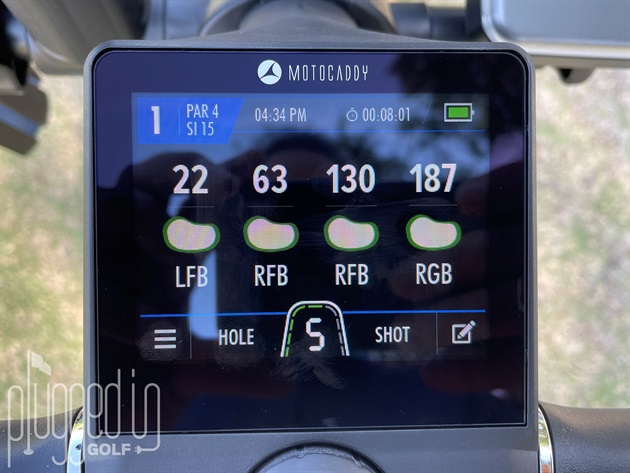
Selecting the “Hazards” mode of the M7 GPS brings up a display of the four nearest hazards and related distances. For bunkers like above, the distances are to their fronts. Those that end in “C” are for carry distances. The graphic makes deciphering the abbreviation a bit easier, but this is an area I wish was more user friendly. For example, would you know what MFWC stood for if it was depicted with some wavy blue lines? Answer: Middle Fairway Water Carry.
The fourth screen option next to the speed setting is “Shot,” which measures shot distances with GPS. Tap Shot when you want to start the measurement and again when you arrive at your ball and the calculated yardage gets displayed. I liked that it’s based on GPS coordinates and not dependent on me driving the trolley in a straight line – my agronomy team prefers I go around bunkers.
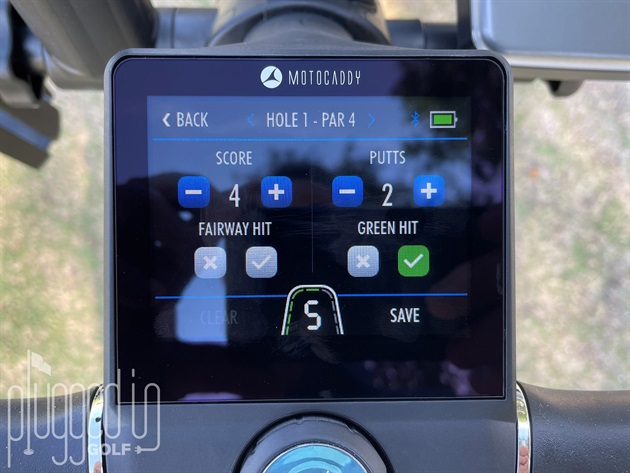
At the bottom right of all the screens described above is a small scorecard symbol, which brings up score tracking and statistics. Being able to easily track number of putts, plus fairway and greens hit is a smart way to evaluate the round.
A final feature not to be overlooked is the ability to enable smartphone notifications. It’s a great way to monitor important texts, missed calls, or other app notifications.
Before leaving this section I wanted to comment on the stability of the Motocaddy M7 GPS Electric Caddy – it’s amazing. As Matt did in his testing of the M7 Remote, I directed the Electric Caddy onto some steep terrain, and it performed admirably. Even though I cringed when the front wheels popped off the ground, the aptly names Anti-Tip Wheel did its job. I encountered one instance where the main wheels spun on a steep mogul, but all I had to do was give the handle a nudge and the unit found enough traction to continue.
Conclusion
So where do I stand on the Motocaddy M7 GPS Electric Caddy? I have mixed feelings. The features of the Performance Plan are a must have – though I wish it included green contours. The $70 annual fee after the free 12 months is reasonable, but something buyers need to consider. And with the M7 GPS priced $350 more than the M7 Remote, I wonder if a standalone GPS device might be a wiser choice. That said, the Motocaddy M7 GPS Electric Caddy delivers everything it advertises, and the display is really nice. For the golfer who can use the Electronic Caddy every outing, the built in GPS is perfect.
Visit MotoCaddy HERE
- PXG Allan Putter Review - October 16, 2024
- Canon PowerShot GOLF Digital Laser Rangefinder Review - September 27, 2024
- PXG Black Ops Irons Review - September 25, 2024


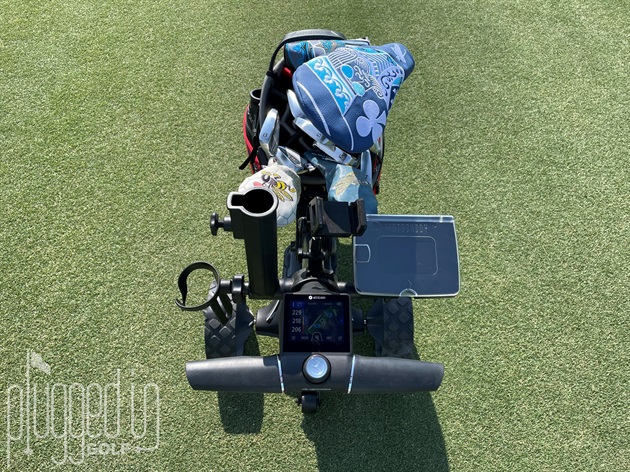
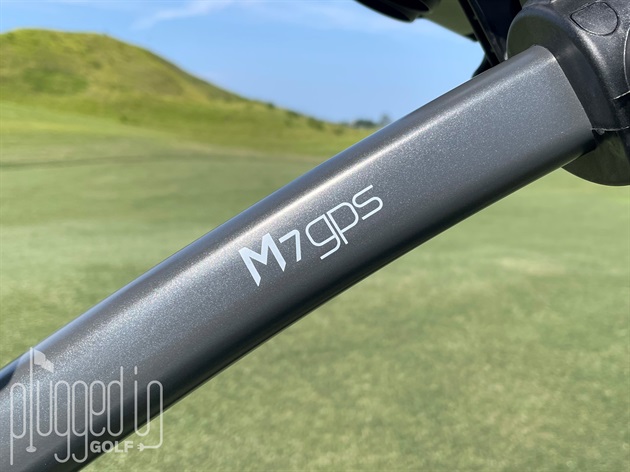
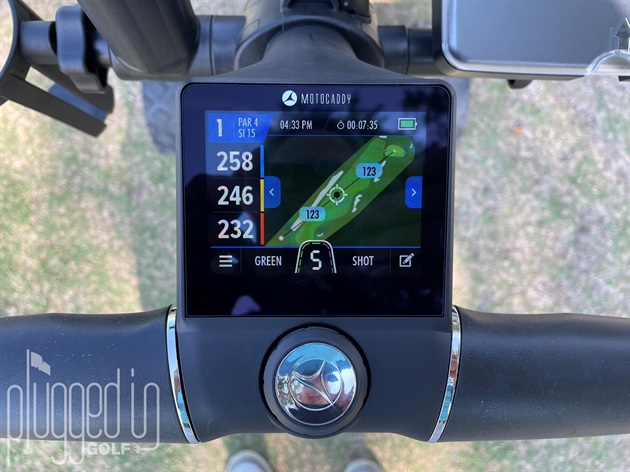
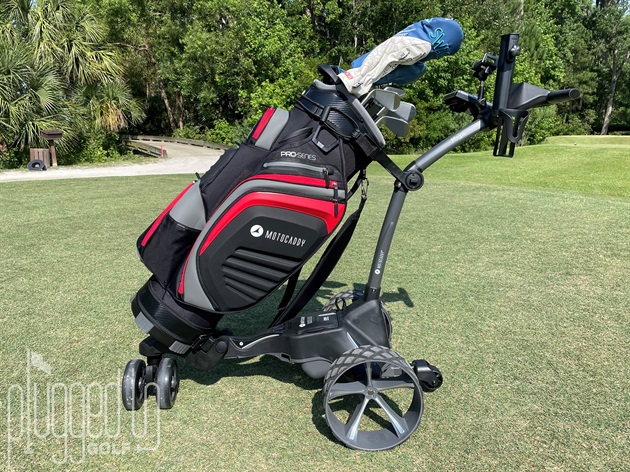
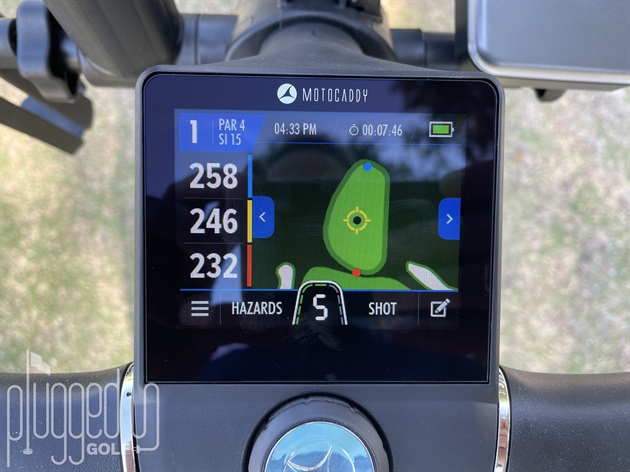
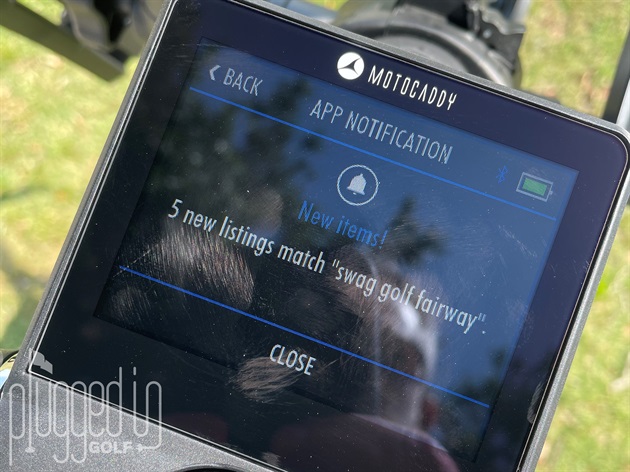
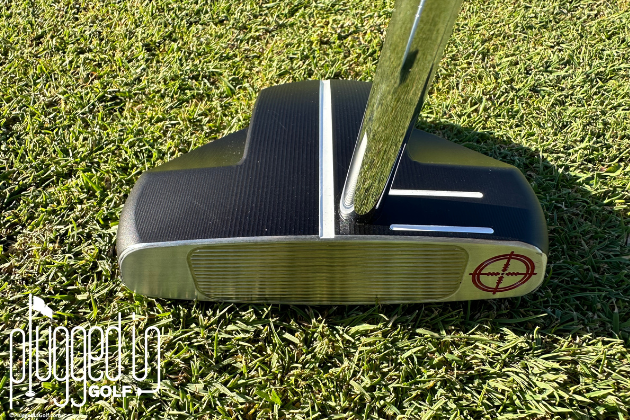
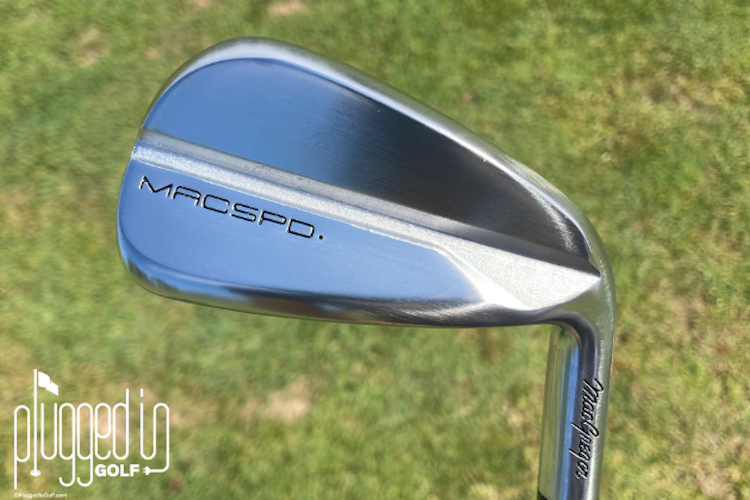










6 Comments
I’d never consider this because of the built in GPS. I have a phone mounted on my cart that looks much better than their offering. KISS is better.
I agree with a previous post that stated that they’d never consider this model. I also think there are much better/cheaper independent options for GPS.
Would like to have some more information about the card and price, as well as transportation, i’m in Namibia 🇳🇦
MotoCady are cheats
In the 1st 12 months my gearboxes seized after much negotiation the gearboxes were reconditioned at a cost of $200 to me
My battery has recently failed an d the want $899 to replace it even though they purport that that the offer a 5 year warranty
Dom (75 year old pensioner)
Hey Matt, is there any reason to buy a motorized push-cart for low country golf courses? Perhaps they are useful with some of the longer distances between green and tee at CR? Thx!
Hey Dan,
Several golfers I regularly play with in the Lowcountry utilize motorized carts. They enjoy the walk but don’t like the effort of pushing or carrying (for some its physical/injury limitations). Personally, for courses with long distance gaps, riding seems prudent unless the whole group is walking.
– Meeks